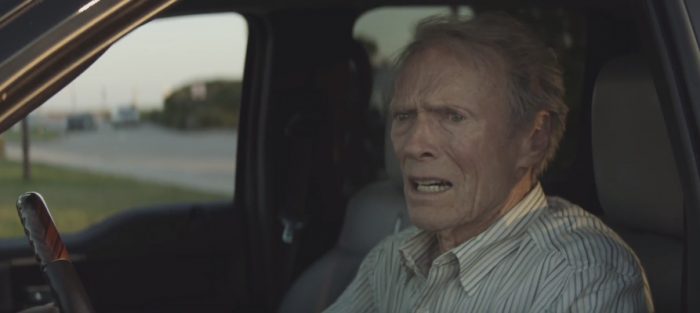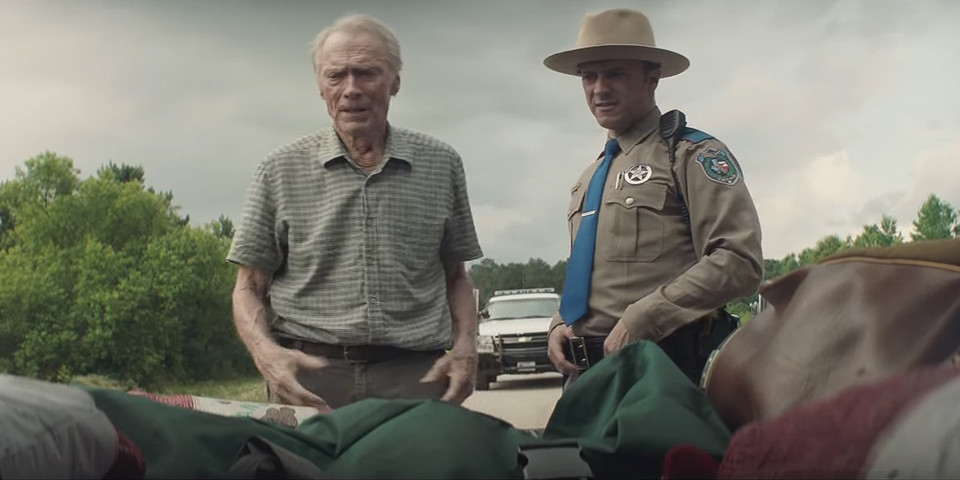Much like Clint Eastwood’s directing career, the script of his thirty-seventh film, The Mule, takes delightfully unexpected turns. Every time it appears to have settled into a predictable routine, something quite unforeseen happens, like a swerve in the road which its 90-year old protagonist must take on his frequent trips delivering drugs for the Mexican cartels.
The premise would seem incongruous if it were not “inspired by” a true story and its New York Times coverage. Earl Stone (an 88-year old Eastwood) is a horticulturist who has spent his life revelling in the professional recognition from his peers. Too busy “putting food” on the family’s table to actually spend time with said family, he has alienated himself from his ex-wife, daughter and granddaughter. Facing foreclosure, he accepts an offer to transport drugs for the Sinaloa cartel, who believe their new “mule’s” advanced age will render him inconspicuous.
From the first images, one can see what appealed to Eastwood about this story. It is very much a vehicle for the director’s recurring obsessions: redemption, mortality, and the dangers of taking the American Dream too seriously. I wouldn’t be surprised to learn that Earl Stone is an alias for Walt Kowalski, Eastwood’s character in Gran Torino. Stone could easily be an older Kowalski, made slightly more humane by the lessons learned in that previous movie.
Just like Walt, Earl is a war veteran who is not afraid to speak his mind. Some might call the movie’s politics problematic. Made from the same mould as every character Eastwood has ever played, Earl is a stubbornly old-fashioned man’s man who refers to women as “gals”, and whose ignorance when it comes to ethnic and sexual minorities is only redeemed by his heart-on-his-sleeve good intentions. What I believe Eastwood and screenwriter Nick Schenk are arguing is that an openness to dialogue and a willingness to recognize the common traits which define us as humans, ultimately matter more than individual politics and political correctness. To oversimplify the movie’s message would be missing out on its multi-layered portrayal of human relations and its refusal to give in to preachiness.

Part of The Mule’s appeal comes from extratextuality: watching an iconic actor in the twilight of his years give one of his final performances. The film relies on viewers’ knowledge of the type of characters Eastwood has been riffing on for most of his career. Yet his performance should not be made light of: it is filled with subtle touches; he does more with the twinkle of an eye than some can with a soliloquy.
In fact, Eastwood’s performance is so magnetic that it almost papers over the cracks of a screenplay which fails to give each of its A-list performers something to do. The marvellous Dianne Wiest is tragically underused as Earl’s ex-wife, who cannot forgive him even while she still loves him. Other characters are so severely underwritten that Laurence Fishburne is credited solely as “DEA Special Agent”.
Watching The Mule, I was thinking of The Old Man and the Gun, 2018’s other star vehicle for an aging Hollywood icon (Robert Redford as an 80-year old bank robber). Both films are about an elderly man seeking validation from those he loves, even while his base instincts threaten the whole enterprise. Where Old Man is light on its feet and able to balance its star power with true originality of form and depth of content, The Mule is less subtle with its core message that family is everything. However, Eastwood himself gives Redford a run for his money with the year’s best meta performance by a grizzled veteran of the silver screen.



